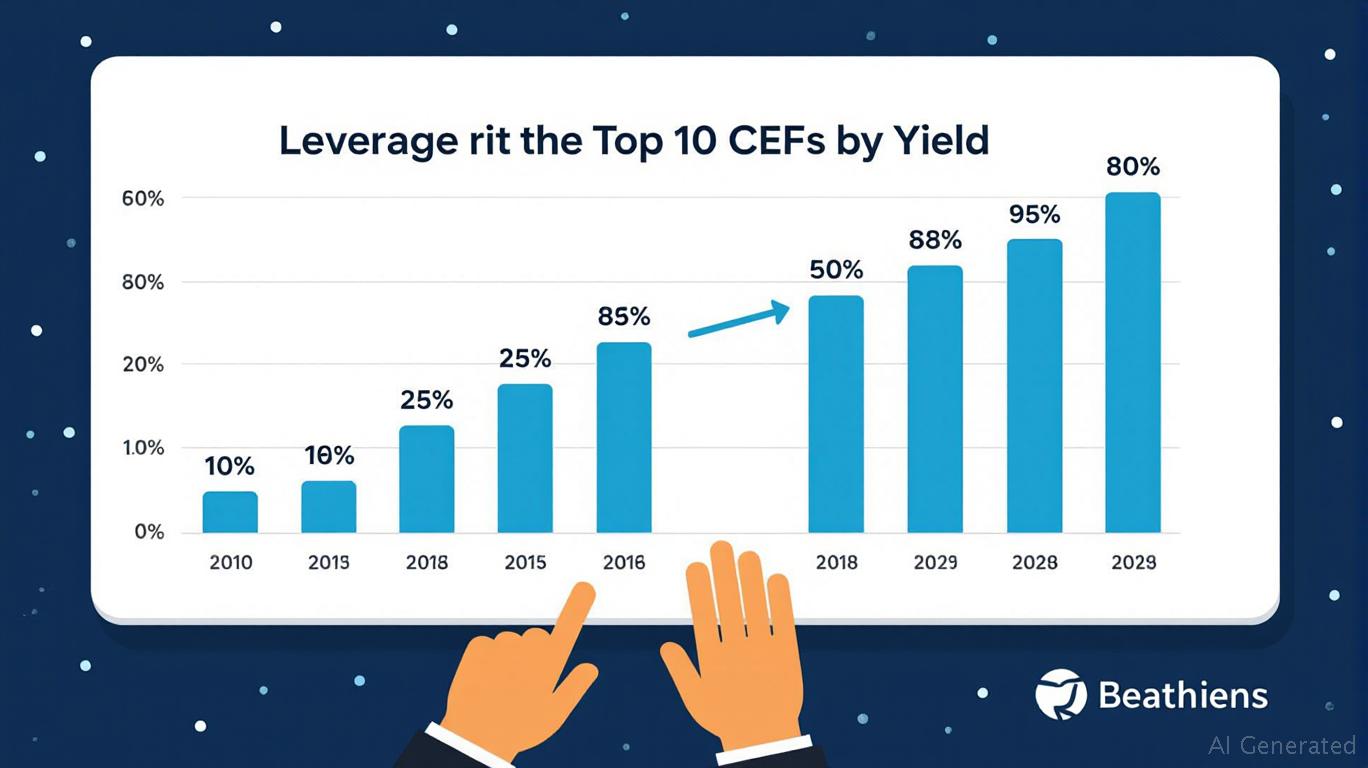ECAT: The High-Yield, Low-Leverage ESG Play That's Rewriting CEF Rules
Investors seeking income often face a painful trade-off: high yields usually come with high risk, whether through leveraged bets, illiquid assets, or exposure to volatile markets. But what if there were a fund that delivered a 21.57% dividend yield while maintaining a leverage ratio of just 0.19%? Enter the BlackRock ESG Capital Allocation Term Trust (ECAT), a closed-end fund (CEF) that's quietly redefining the boundaries of risk-adjusted income investing.
The High-Yield Engine: A Managed Distribution Machine
ECAT's annualized distribution yield of 21.57% (as of August 2024) is among the highest in the CEF universe, dwarfing the average equity CEF yield of around 7-8%. This is no gimmick: the fund employs a managed distribution plan, paying out $0.2937 per share monthly—a rate that rose to $3.63 annually in May 2025 from $3.49 the prior year. The yield is calculated against its $16.72 share price, though investors should note that dividends are not guaranteed and may fluctuate with asset performance.
What's unusual here is the sustainability of the payout. Unlike many high-yield CEFs that rely on leverage or return of capital, ECAT's dividends are supported by a conservative balance sheet. Its trailing 12-month NAV-based yield of 19.35% further underscores the alignment between distributions and underlying asset performance.
The Low-Leverage Miracle: Safety in a Leveraged World
CEF investors often associate high yields with high leverage—many equity CEFs carry leverage ratios of 20-30%.
, however, breaks this mold. As of July 2025, its effective leverage ratio is just 0.19%, with total debt of $3.5 million against $1.89 billion in assets. This is structural minimalism: the fund uses negligible borrowed funds, relying instead on its portfolio's income generation and BlackRock's active management to fuel distributions.
The implications are profound. With interest expense at 0% (as of 2023), ECAT avoids the compounding costs that can cripple leveraged funds in rising-rate environments. Its expense ratio of 1.32% is moderate for a CEF, especially considering the scale of its assets. This low-leverage profile acts as a shock absorber, shielding investors from the volatility that often accompanies aggressive borrowing.
The ESG Edge: A Values-Driven Income Machine
ECAT isn't just about yield—it's also a values-driven play. The fund invests at least 80% of its assets in ESG-screened securities, including equities and debt instruments aligned with BlackRock's ESG criteria. This focus on environmental, social, and governance factors isn't just a marketing hook: it's a risk management tool. By excluding companies with poor ESG practices, ECAT avoids sectors prone to regulatory or reputational risks, such as fossil fuels or controversial labor practices.
The ESG angle also taps into a growing investor demand. As of 2025, ESG-focused funds have outperformed traditional benchmarks during climate-related market stress, proving that values and returns can coexist. ECAT's term structure—set to dissolve in 2033—adds urgency, incentivizing managers to maximize returns while adhering to its mandate.
Risks to Consider
No investment is without pitfalls. ECAT's term structure means it will liquidate by 2033, which could pressure its NAV as it approaches maturity. Additionally, its non-diversified portfolio (concentrated in top holdings) exposes investors to idiosyncratic risks. The fund's reliance on BlackRock's discretion also introduces manager risk, though the firm's track record in ESG strategies is strong.
Lastly, while leverage is minimal, the fund's monthly distribution policy could force it to tap capital if income falters—a possibility if interest rates rise sharply or ESG sectors underperform.
The Bottom Line: A Rare Blend of Yield, Safety, and Values
ECAT is a contrarian's dream in a CEF landscape dominated by high-leverage, low-yield funds. Its 21.57% yield, 0.19% leverage, and ESG alignment create a rare trifecta: high income with structural safety. For income investors willing to hold for the long term—and accept the risks of a term-limited fund—ECAT offers a compelling entry point.
Investment Takeaway:
- Buy if: You're seeking high income, can tolerate volatility, and align with ESG principles.
- Avoid if: You prioritize capital preservation over yield or dislike term-based liquidity constraints.
In a world where “high yield” often means “high risk,” ECAT is proving that safety and income can still share the same portfolio.
Sign up for free to continue reading
By continuing, I agree to the
Market Data Terms of Service and Privacy Statement

Comments
No comments yet